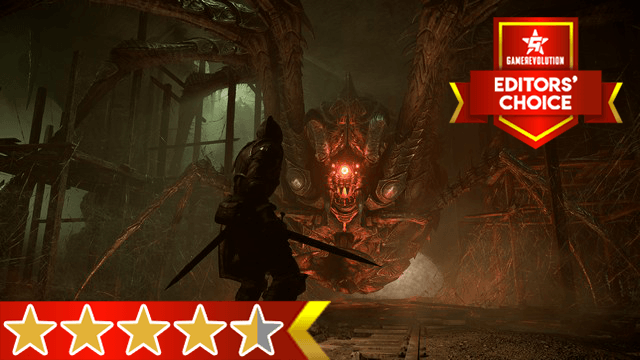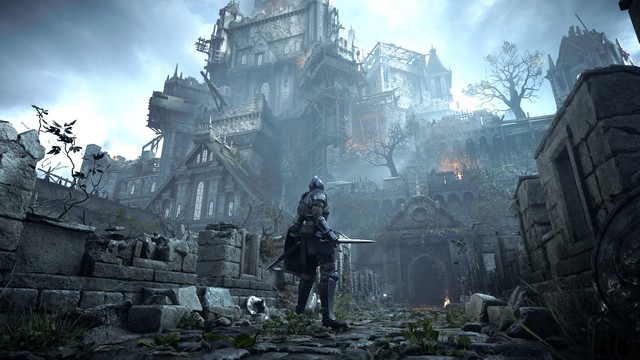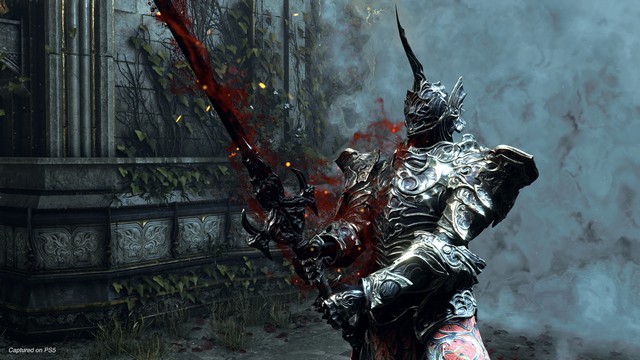Demon’s Souls isn’t as lauded as its successor, but it’s no less timeless. The PS5 remake from Bluepoint Games is my first time playing through the game that started it all, and it’s now my favorite of the series. It’s a leaner experience and is split into five linear worlds that focus the player toward a goal. However, the fact that the player can change between these worlds, and the levels that make them up, freely makes Demon’s Souls infinitely more approachable than Dark Souls, Bloodborne, or Sekiro.
The fact that there’ve been few mechanical changes between the PS3 original and the PS5 remake shows how ahead of its time Demon’s Souls was. Sure, there are many quality of life improvements, like a clearer UI, a more intuitive menu, and being able to send items to the storage box without returning to the Nexus, but the content is still as it was in 2009.
Looks can kill
Of all the PS5 launch titles, Demon’s Souls is the one that looks most “next-gen” to me. The stone castle of Boletaria, the spires of Latria, and swampy heights of the Valley of Defilement, and the Shrine of Storms’ crumbling battlements all showcase the new system’s prowess. The desire to see more of each area is just as much of a motivator as the promise of new items. Fortunately, the included photo mode allows players to capture their journey to their heart’s content.
Demon’s Souls offers two different visual modes, Cinematic and Performance. Cinematic mode is gorgeous, outputting true 4K at 30fps. However, most players will prefer the 60fps at 1440p (upscaled to 4K) of Performance mode. The difference between 30 and 60fps is very palpable in this game, and there’s not a lot of fidelity lost in exchange for the faster framerate.
The same, but different
The thing that has so inured me to Demon’s Souls is the progression. Like in Dark Souls, players aren’t given a ton of direction about where to go next. Once the tutorial section is over, you’re transported to the Nexus and told to pick an Archstone and head into your first level. Series veterans will know the easiest of the five possible starting levels is the Boletarian Palace. However, any of the five can be conquered by a brand new character.
The flexibility in progression means that you can cut your losses if you’re stuck in a level and try to take on another. All progress and items gained from a level are permanently unlocked, so you can grind through another area and come back later. I had to do this myself when the Fool’s Idol kept owning me in the Tower of Latria. I lost to her five times, dipped out, fought through two more levels and bosses, and came back and smashed her.
Demon’s Souls isn’t significantly less demanding than Dark Souls, but it feels fairer. Not that Dark Souls is overly punishing (despite its reputation), but it’s a lot more confusing with its open world. I recommend anyone who has been turned off of Dark Souls because of its perceived difficulty should give Demon’s Souls a try. Having to worry only about the small chunk in front of you makes the game less intimidating, and I believe its newfound popularity with the remake will be a gateway for even more players to fall in love with Soulslikes.
Candid camera

The fighting in Demon’s Souls is much like that in Dark Souls. It’s meaty, stamina-dependent, and one wrong move can spell death for the player. Combat seems a bit easier to grasp in this game, if only because your initial choice of class isn’t as binding. If you start as a Temple Knight and decide to be a spellcaster instead, you just start spending souls on different stats.
Melee combat can be challenging in Demon’s Souls, but magic is practically broken. There’s no difficulty setting in this game, but starting as the Royalty class gives players a ring that regenerates MP and access to the Soul Arrow spell. This lets you one or two-shot most regular enemies with impunity in each of the initial Archstone levels. This is actually a great thing because it allows beginners to ease into the ebb and flow of Souls combat instead of being thrown into it, and I’m glad Bluepoint didn’t see it as a flaw to balance.
Despite the combat generally holding up well, there’s one aspect of the game that did not. The camera works just fine as long as there’s a bit of space between your character and a wall. However, when you’re against a wall and locked onto an enemy, the camera can get stuck and prevent you from seeing the fight properly. Fortunately, most of the game takes place in relatively open areas, but boss battles follow the standard arena format. In particular, the boss of the Valley of Defilement, Leechmonger, got a cheap kill on me because the camera wouldn’t keep focused on it, so I could see to dodge its projectiles.
Demon’s Souls PS5 Review | The Final Verdict
Bluepoint’s remake of Demon’s Souls makes the game feel brand new. Had I not known better, I wouldn’t have guessed that From Software developed its core game design 11 years ago. It looks and plays fantastic on the PS5 and verges on a must-buy for anyone who owns the console. Even those who aren’t fans of other entries in the Souls series might find that Demon’s Souls is just different enough to love.
With a ton of replayability, a haunting and beautiful world, and satisfying gameplay, the PS5’s first exclusive hits it out of the park. Bluepoint did an excellent job updating Demon’s Souls to feature modern graphics and quality of life fixes without stripping anything away from the original. After how well this and Shadow of the Colossus turned out, I can’t wait to see which classic the studio tackles next.
-
Each world is lovingly crafted and begs to be explored.
-
Quality of life updates ease frustrations with the original.
-
No missing content.
-
Performs great on PS5, no slowdown or lag and loads very quickly.
-
Camera can lead to cheap deaths when fighting in close quarters.










